
|

|
 |
|
MEDICINE FROM NATURE |
|
PHYTOCHEMISTRY OF PLANTS |
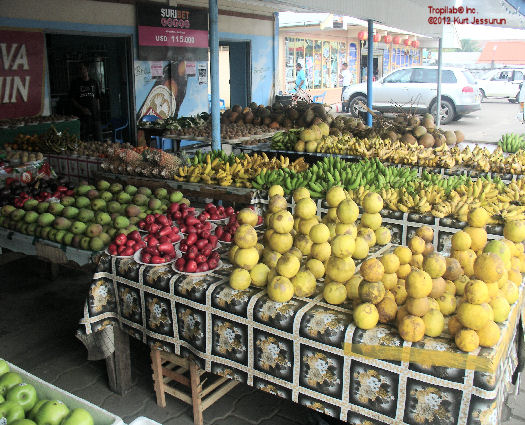 Plants synthesize (combine) an enormous variety of phytochemicals.
Plants synthesize (combine) an enormous variety of phytochemicals.These are all products of the primary metabolism of the plant (such as sugars and fats). The chemical reactions are involved in maintaining the living state of the cells and the organism. Plants also synthesize additional components of which the main groups are alkaloids, polyphenols, terpenes and glycosides. 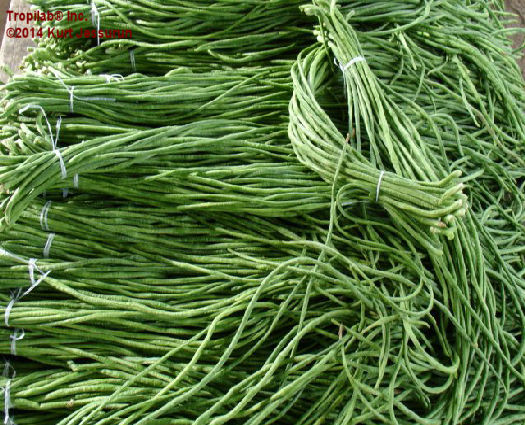 These are called secondary metabolites; they protect the plant against fungi, bacteria, animals, insects
and other
hostile plants.
These are called secondary metabolites; they protect the plant against fungi, bacteria, animals, insects
and other
hostile plants.The medicinal effects of plants are a result of the combination of secondary metabolites that are present in it. It is estimated that as many as 10,000 different phytochemicals potentially may affect diseases. 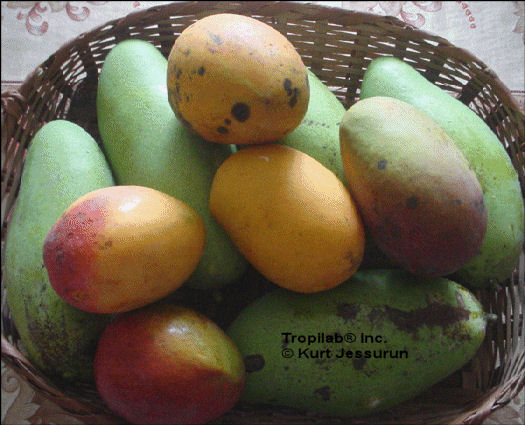 Although
there are far more, many have not yet chemically been characterized.
Although
there are far more, many have not yet chemically been characterized.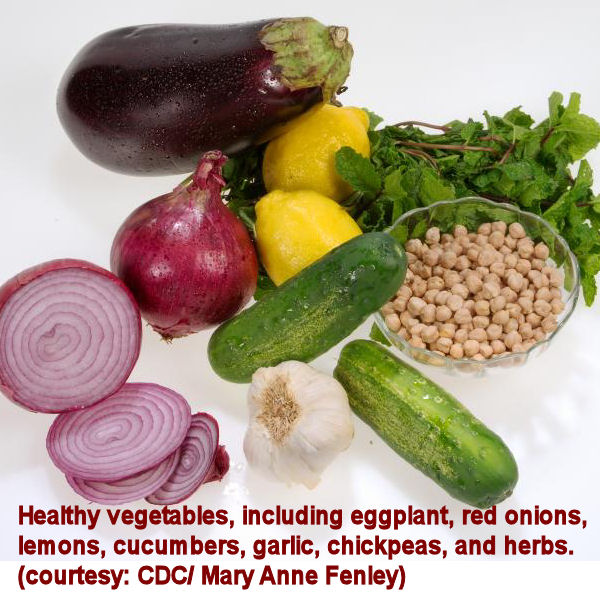 There is clear evidence that the many phytochemicals in fruits and vegetables may reduce the risk of cancer, heart attacks
and strokes, among others.
There is clear evidence that the many phytochemicals in fruits and vegetables may reduce the risk of cancer, heart attacks
and strokes, among others.These phytochemicals in freshly harvested plant foods can be destroyed or even removed by some processing techniques such as cooking. Fruit and vegetables also contain vitamins, such as A, C and E as well minerals such as calcium and zinc. |
|
HERBAL MEDICINE |
|
This medical treatment is based on plants throughout history
and this tradition is still practiced up to
this day in most parts of the world.
Plants are used for medicinal purposes;
however, it is not only strictly based on evidence gathered using
scientific methods. A more scientific approach is done by phytotherapy that works only with modern standards of effectiveness testing herbs and medicines, derived from natural sources. 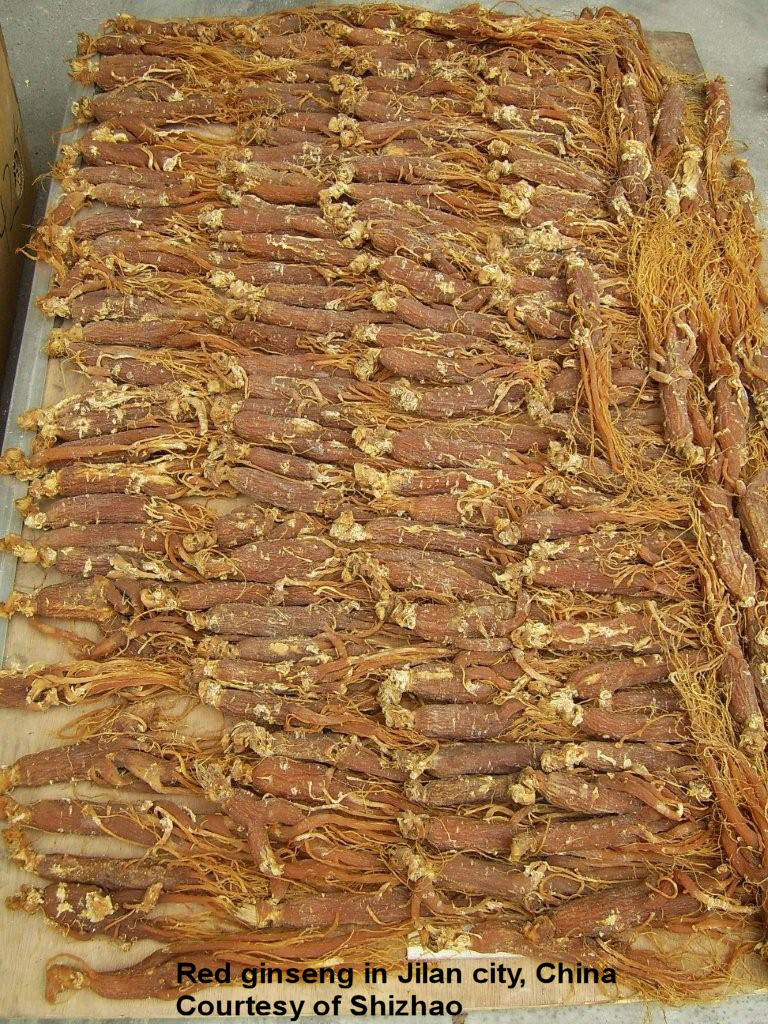 It can be considered as the study on the effects and clinical use of herbal medicines.
The medicines used in phytotherapy
differ from plant-derived medicines in standard pharmacology.
It can be considered as the study on the effects and clinical use of herbal medicines.
The medicines used in phytotherapy
differ from plant-derived medicines in standard pharmacology.In phytotherapy, the complexity of substances from plants is preserved with relatively less processing while standard pharmacology (the working of medicine in the body) focuses on isolating active compounds from plants. Traditional phytotherapy is synonymous for herbalism; besides the approach to scientific methods, other means such as historical and traditional knowledge are also incorporated. Traditional knowledge can guide the selection of optimal dose, species, time of harvesting and target population.  Herbalists use extracts from parts of plants, such as roots stems, bark, flowers and leaves but do not
isolate
particular phytochemicals.
Herbalists use extracts from parts of plants, such as roots stems, bark, flowers and leaves but do not
isolate
particular phytochemicals.Pharmaceutical (allopathic) medicine prefers single ingredients citing that the dosage this way can be more easily quantified. However, isolating plant compounds may change or destroy the medicinal effect. Herbalists often reject the idea of single active ingredients; they argue that the different phytochemicals present in many plants will interact to enhance the therapeutic effects of the plant and dilute possible toxicity. The phytochemical interactions and trace components present in plants can alter the drug response (in the body) in ways that cannot be replicated with a combination of a few isolated active ingredients. The many phytochemicals in the plants exert therapeutic effects; more than any single compound alone can do. Claims of synergy and multi-functionality have been supported by science; synergism plays an important role in therapeutic efficacy of plants. In many cases additional substances in the plant, enhance activity of the components actually responsible for this synergistic effect. We at TROPILAB® make use of all available sources in standard and ethno-pharmacology, modern and traditional phytotherapy for further research and applications of plants and extracts against illnesses and diseases. |
|
MEDICINAL PLANTS IN SURINAM |
|
Being an intrinsic part of the Amazon rainforest,
many of the indigenous plants from
Surinam
However, due to large floods of immigrants from other parts of the world, many plant species not indigenous to this country are now also growing abundantly in Surinam. In this website we describe how plants from Surinam (both indigenous and non-indigenous) can be utilized and applied in the treatment of many illnesses and diseases. Traditional Surinam medicine (locally called Oso Dresi), includes for the most part native Amazonian elements, but also imported ones, like those from Africa and Southeast Asia namely India and Dutch East Indies (today’s Indonesia). Many plants used in traditional medicine from India (Ayurvedic medicine) and Indonesia (Jamu) are part of the Osodresi. There is growing interest in Surinamese medicine since the country is virtually located right in Amazon rainforest which is home to an immense biodiversity of plants, animals, amphibians, insects and fungi. The traditional use actual means that countless trial-and-error tests have been conducted over the centuries by South American Indians and Maroons. All this points the way to natural therapeutic use of plants. Indigenous uses of plants by Surinam traditional healers have a high success rate and as such often lead to unexpected leads for further research. Present research of plants, used for ages as medicine, brings more and sometimes surprising results and applications to light. However there is no magic bullet for diseases as is suggested in the film Medicine man with Sean Connery but rather hard work and scientific research. There are more than 1,200 plants that are used against numerous diseases and most of those plants have more than one working. |
|
THE AMAZON RAINFOREST |

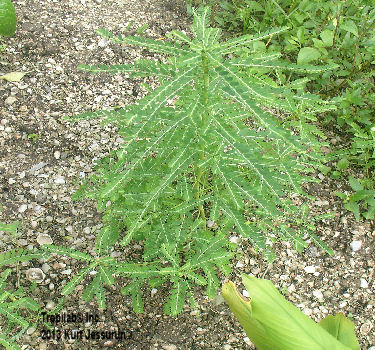 Let us now embark on a tour through the Amazon rainforest and check on some of the plants used
for a wide array of illnesses and
diseases.
Let us now embark on a tour through the Amazon rainforest and check on some of the plants used
for a wide array of illnesses and
diseases.We will find humble plants such as Chanca piedra (Phyllanthus species); growing abundantly in the plain costal area to lianas (woody vines), to the mighty Kapok tree (Ceiba pentandra), growing deep in the rainforest. 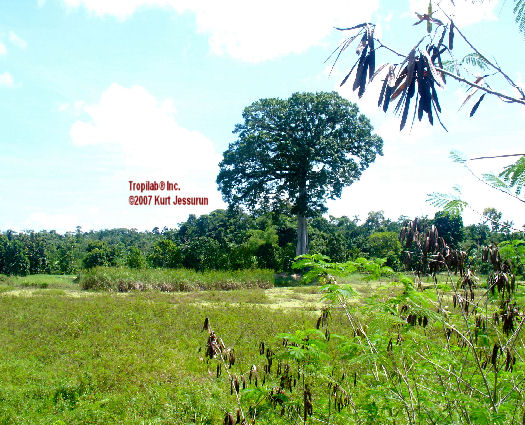 These plants are all employed in phytotherapy; Chanca piedra is used against liver and kidney ailments
as well urinary tract and
bladder infections. Moreover, it works excellent against hepatitis.
These plants are all employed in phytotherapy; Chanca piedra is used against liver and kidney ailments
as well urinary tract and
bladder infections. Moreover, it works excellent against hepatitis.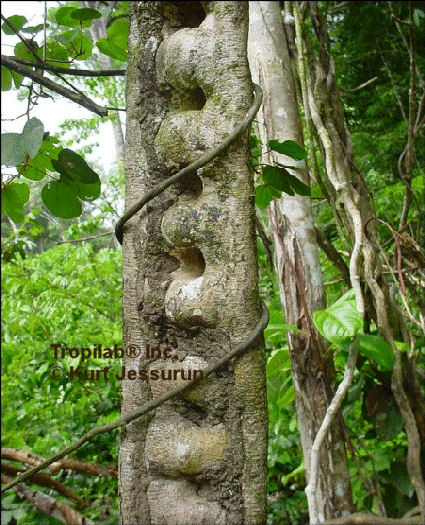 Lianas such as Abuta (Cissampelos pereira) and
Dobrudua (Strychnos melinoniana) are used
respectively against women's ailments and as a powerful aphrodisiac.
Lianas such as Abuta (Cissampelos pereira) and
Dobrudua (Strychnos melinoniana) are used
respectively against women's ailments and as a powerful aphrodisiac.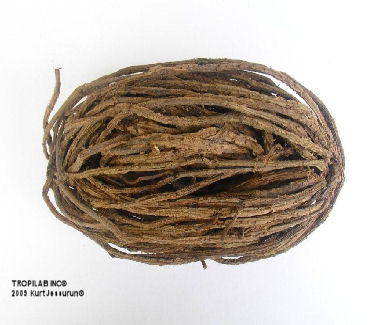 The biggest tree of the Americas, the Kapok tree, is used against fevers, dysentery and venereal diseases.
The biggest tree of the Americas, the Kapok tree, is used against fevers, dysentery and venereal diseases.
There are a number of dangerous tropical diseases* such as malaria and leishmaniasis. Against the malaria, Surinam bitterwood (quassia amara) can be used and for the latter one Mullaca (physalis angulata) and Epazote (Chenopodium ambrosioides) are available. 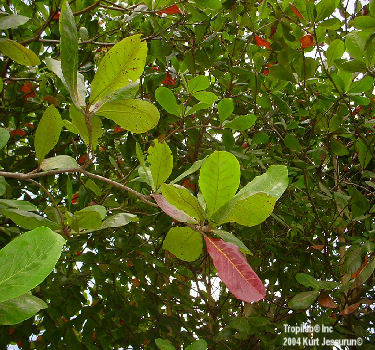 And than there are also not indigenous medicinal plants originally from South-east Asia, such as the
Tropical almond
(Terminalia catappa), which is now growing abundantly in Surinam.
An extract from the fallen red leaves can be successfully used
again liver ailments such as cirrhoses.
And than there are also not indigenous medicinal plants originally from South-east Asia, such as the
Tropical almond
(Terminalia catappa), which is now growing abundantly in Surinam.
An extract from the fallen red leaves can be successfully used
again liver ailments such as cirrhoses.
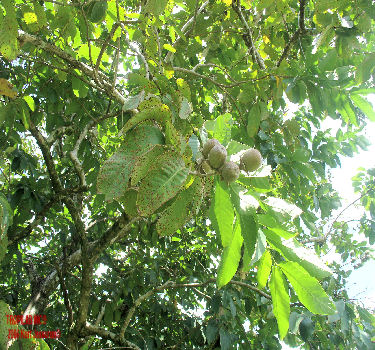 The leaves extract of the Banaba (Lagerstroemis speciosa) is applied against diabetes, obesity,
gout (acute inflammatory
arthritis) and hyperlipidemia (high fat levels in the blood).
The leaves extract of the Banaba (Lagerstroemis speciosa) is applied against diabetes, obesity,
gout (acute inflammatory
arthritis) and hyperlipidemia (high fat levels in the blood). The list goes on and on but for the sake of readability the scope of the plants to be discussed has to be limited though. *Tropical diseases encompass all diseases that occur solely, or principally, in the tropics. In practice, the term is often taken to refer to infectious diseases that thrive in hot, humid conditions, such as malaria, leishmaniasis, schistosomiasis, onchocerciasis, lymphatic filariasis, Chagas disease, African trypanosomiasis, and dengue. (from the W.H.O website) |
Disclaimer: |